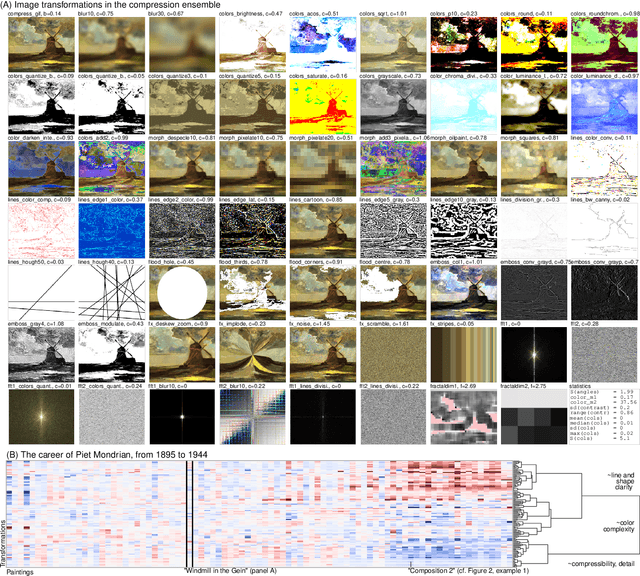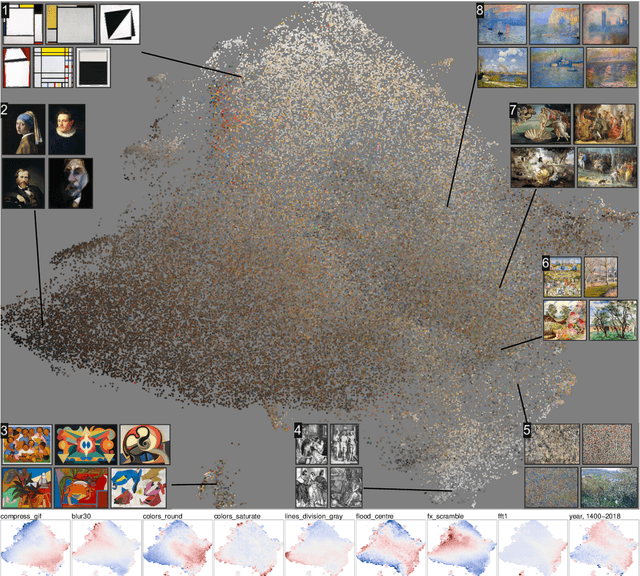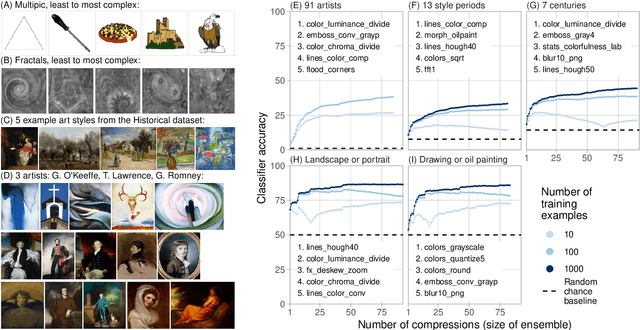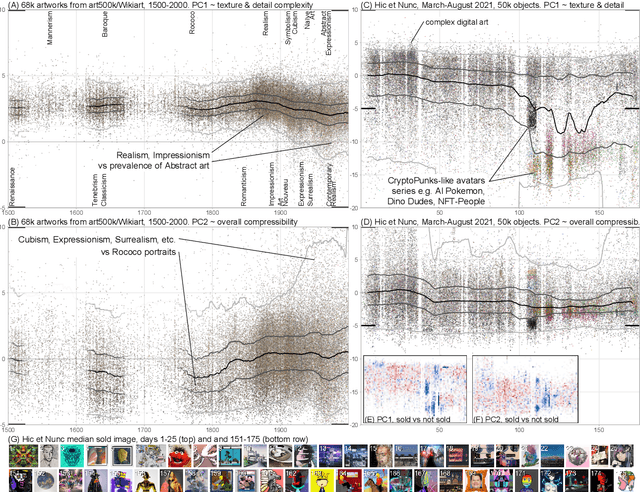Mar Canet Solà
Explaining CLIP through Co-Creative Drawings and Interaction
Jun 12, 2023



Abstract:This paper analyses a visual archive of drawings produced by an interactive robotic art installation where audience members narrated their dreams into a system powered by CLIPdraw deep learning (DL) model that interpreted and transformed their dreams into images. The resulting archive of prompt-image pairs were examined and clustered based on concept representation accuracy. As a result of the analysis, the paper proposes four groupings for describing and explaining CLIP-generated results: clear concept, text-to-text as image, indeterminacy and confusion, and lost in translation. This article offers a glimpse into a collection of dreams interpreted, mediated and given form by Artificial Intelligence (AI), showcasing oftentimes unexpected, visually compelling or, indeed, the dream-like output of the system, with the emphasis on processes and results of translations between languages, sign-systems and various modules of the installation. In the end, the paper argues that proposed clusters support better understanding of the neural model.
Collection Space Navigator: An Interactive Visualization Interface for Multidimensional Datasets
May 11, 2023Abstract:We introduce the Collection Space Navigator (CSN), a browser-based visualization tool to explore, research, and curate large collections of visual digital artifacts that are associated with multidimensional data, such as vector embeddings or tables of metadata. Media objects such as images are often encoded as numerical vectors, for e.g. based on metadata or using machine learning to embed image information. Yet, while such procedures are widespread for a range of applications, it remains a challenge to explore, analyze, and understand the resulting multidimensional spaces in a more comprehensive manner. Dimensionality reduction techniques such as t-SNE or UMAP often serve to project high-dimensional data into low dimensional visualizations, yet require interpretation themselves as the remaining dimensions are typically abstract. Here, the Collection Space Navigator provides a customizable interface that combines two-dimensional projections with a set of configurable multidimensional filters. As a result, the user is able to view and investigate collections, by zooming and scaling, by transforming between projections, by filtering dimensions via range sliders, and advanced text filters. Insights that are gained during the interaction can be fed back into the original data via ad hoc exports of filtered metadata and projections. This paper comes with a functional showcase demo using a large digitized collection of classical Western art. The Collection Space Navigator is open source. Users can reconfigure the interface to fit their own data and research needs, including projections and filter controls. The CSN is ready to serve a broad community.
Compression ensembles quantify aesthetic complexity and the evolution of visual art
May 20, 2022



Abstract:The quantification of visual aesthetics and complexity have a long history, the latter previously operationalized via the application of compression algorithms. Here we generalize and extend the compression approach beyond simple complexity measures to quantify algorithmic distance in historical and contemporary visual media. The proposed "ensemble" approach works by compressing a large number of transformed versions of a given input image, resulting in a vector of associated compression ratios. This approach is more efficient than other compression-based algorithmic distances, and is particularly suited for the quantitative analysis of visual artifacts, because human creative processes can be understood as algorithms in the broadest sense. Unlike comparable image embedding methods using machine learning, our approach is fully explainable through the transformations. We demonstrate that the method is cognitively plausible and fit for purpose by evaluating it against human complexity judgments, and on automated detection tasks of authorship and style. We show how the approach can be used to reveal and quantify trends in art historical data, both on the scale of centuries and in rapidly evolving contemporary NFT art markets. We further quantify temporal resemblance to disambiguate artists outside the documented mainstream from those who are deeply embedded in Zeitgeist. Finally, we note that compression ensembles constitute a quantitative representation of the concept of visual family resemblance, as distinct sets of dimensions correspond to shared visual characteristics otherwise hard to pin down. Our approach provides a new perspective for the study of visual art, algorithmic image analysis, and quantitative aesthetics more generally.
 Add to Chrome
Add to Chrome Add to Firefox
Add to Firefox Add to Edge
Add to Edge